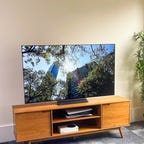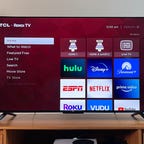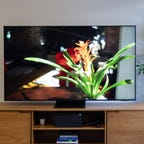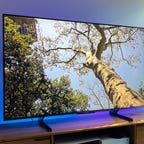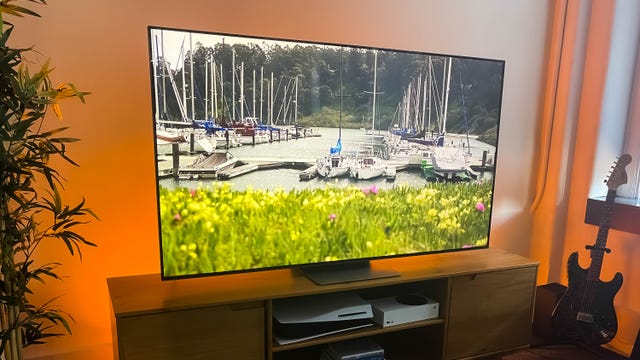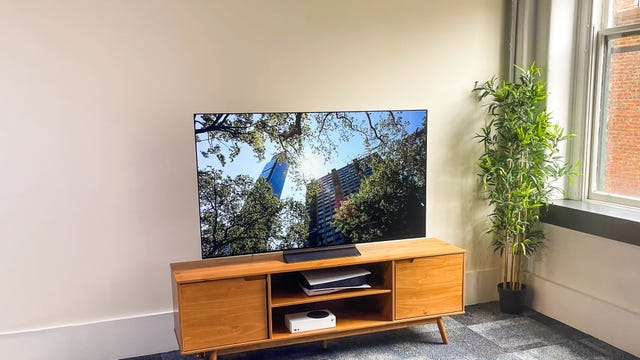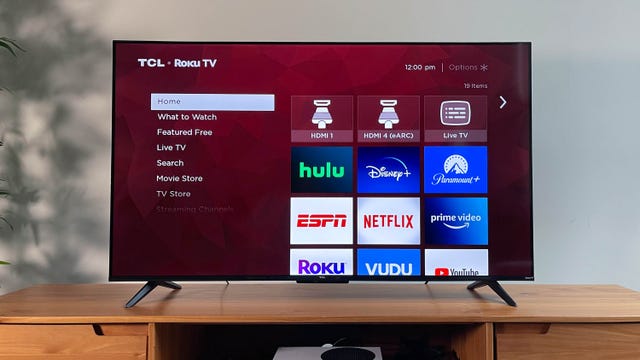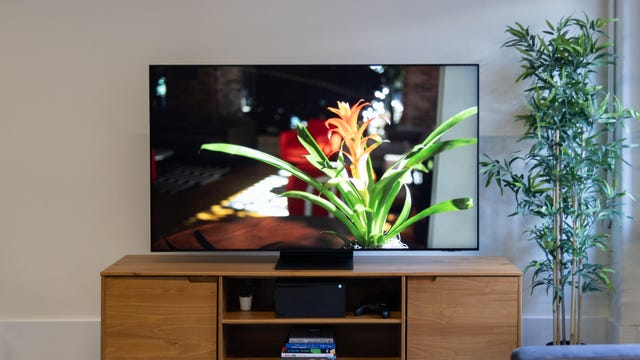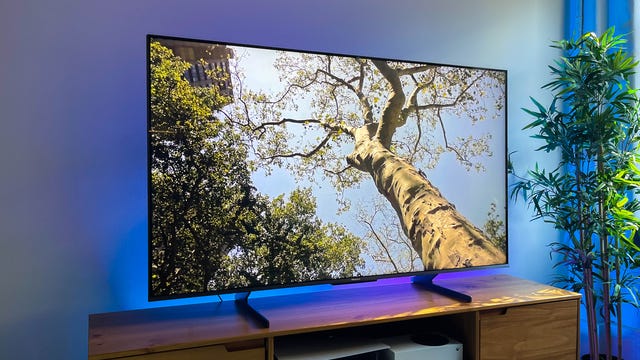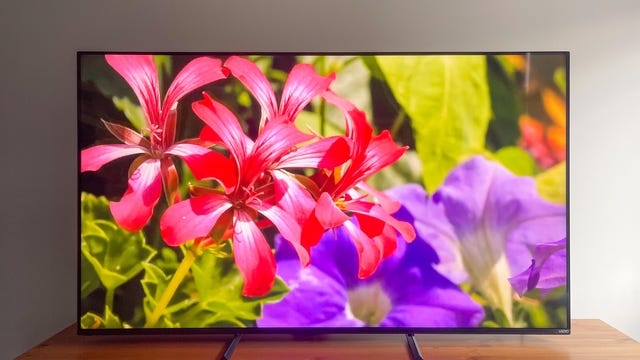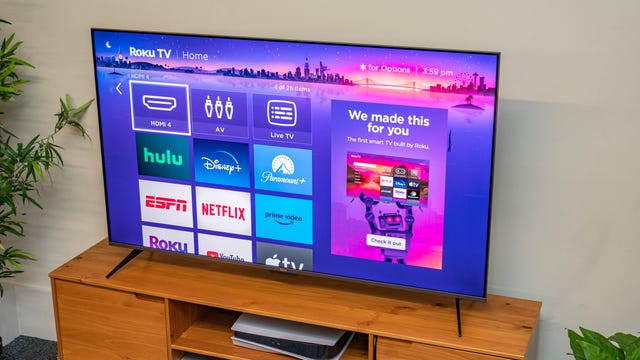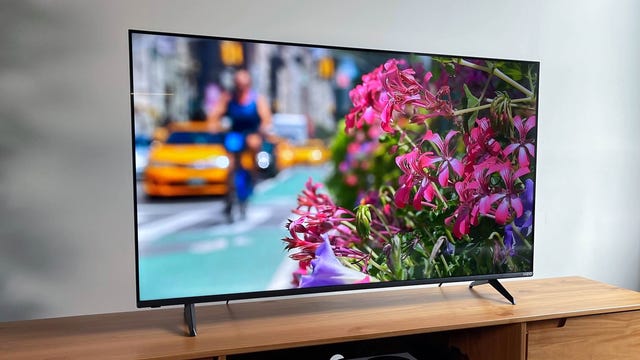Best TV for 2023, Tested and Reviewed
Whether you're into console gaming or just looking to stream Netflix, here are our favorite TVs for 2023.
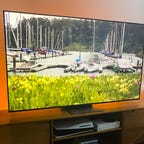
In this article:
Though the latest TV models from brands like Samsung, LG and Sony are arriving online and in showrooms to tempt your eyes and wallet, they're almost always more expensive than TVs that've been around since last year. That's because the best TV deals are cyclical, and discounts on 2023 TVs won't begin in earnest until fall and winter, as stores slash prices and TV makers compete for your dollar.
But which TVs are actually the best value for your money right now, in the spring of 2023? That's the question we've strived to answer at CNET. Our list, featuring TVs we've reviewed side by side, is designed to help you find the best TV for you, from high-end OLED and QLED models to budget LCD TVs and everything in between.
What is the best TV?
The TCL 6-Series Roku TV sits at the top of our list of best TVs for a number of reasons. It offers superb picture quality, an affordable price tag and Roku, the best smart TV system. It also includes gaming features like 4K/120Hz input and variable refresh rate that can get the most out of consoles like the PS5 and Xbox Series X. When a friend asks me what TV to buy from 55- to 85-inches, and money is still an object, I tell them to get the TCL 6-Series.
There are plenty of other excellent choices out there, however, so even though the 6-Series is my current favorite for most people, it might not be right for your preferences or budget.
Best TVs in 2023
For the last five years, the TCL 6-Series has been our favorite TV for the money, and the newest version -- also known as the R655 series -- is no exception. This TV has an excellent image thanks to mini-LED tech and well-implemented full-array local dimming that helps it run circles around just about any other TV at this price. It improves upon the previous R635 series with improved gaming extras and a new center-mount stand that you can elevate to make room for a soundbar, although the new 85-inch size has standard legs. And finally, the Roku TV operating system is our hands-down favorite.
Note that in addition to the R635, which this TV replaces, other versions of the 6-Series were released in 2021 and remain on sale. The R646 series uses the Google TV operating system but otherwise has similar specifications to the R655 models reviewed here. The R648 series has 8K resolution and is significantly more expensive.
The prices shown below are for the 65-inch size.
The C2 represents the pinnacle of picture quality at a price that's admittedly high, but not too crazy. It beats any non-OLED TV on this list, including the Samsung QN90B below, with its perfect black levels, unbeatable contrast and superb off-angle viewing. It also has superb gaming features, making it the perfect companion to an Xbox Series X or S, PlayStation 5 or both. The C2 comes in a variety of sizes as well, although the bigger models are expensive.
Improvements over the C1 from the previous year include carbon-fiber construction for up to 47% lighter weight -- the 65-inch version we reviewed weighs just 37 pounds with its stand, compared to 72 pounds for the 65-inch C1 -- as well as some additional tweaks to game mode and a new "always ready" feature.
The prices shown below are for the 65-inch size.
The picture quality of the TCL 4-Series Roku TV was a step behind the Vizio V-Series in our budget TV test, but the differences between the two are slight enough that you'd really have to have them set up side by side to notice anything at all. The 4-Series lacks the Dolby Vision, Bluetooth connectivity and AMD FreeSync with a variable refresh rate, all of which the Vizio offers.
The 4-Series' advantage over the Vizio is that it comes with the excellent Roku Smart TV system built in. That makes it a great choice for those looking for a one-stop smart TV solution, without having to add an external streaming device.
The prices shown below are for the 50-inch size.
Looking for a high-end TV with spectacular image quality, but don't want an OLED? The Samsung QN90B is your best bet. This TV uses QLED TV tech augmented by mini-LED for a brighter image than any OLED TV. The spectacular contrast of OLED still won out in our side-by-side tests, but the QN90B QLED screen comes closer than ever.
The prices shown below are for the 65-inch size.
Among midpriced models we liked the TCL 6-Series just a little better in our side-by-side comparison, but this Hisense is a strong contender. Its excellent image quality is anchored by best-in-class brightness that improves its bright-room picture quality and makes HDR TV movies, shows and games really pop. It's actually brighter than the TCL with better contrast, but the TCL's slightly more accurate image gave it the edge overall. The Hisense uses Google TV instead of Roku, and unlike the TCL, the U8H includes an ATSC 3.0 tuner. Frankly, you can't go wrong with either one.
The prices shown below are for the 65-inch size.
The Vizio MQX is one of the least expensive TVs to feature full-array local dimming, which lets it reproduce TV shows, movies and games with enough contrast and pop to do HDR justice. The MQX has fewer dimming zones than more expensive TVs like the TCL 6-Series and Hisense U8H, but it offers 16 zones on the 50-inch, 30 on the 65-inch and 42 on the 75-inch, which is more than enough for excellent overall picture quality, with bright highlights, dark black levels, punchy contrast and accurate color.
Unlike the M7 from 2021, the MQX has a true 120Hz refresh rate, which allows compatibility with 4K/120Hz signals from game consoles like the Xbox Series X and PlayStation 5, and worked well in our tests. Vizio supports both major HDR formats, HDR10 and Dolby Vision, in the M-Series. If you can't save up for the TCL or the Hisense but want a better picture than the TCL 4-Series or Vizio V-series, the Vizio MQX is an excellent happy medium.
The prices shown below are for the 65-inch size.
Competition among TVs in the middle pricing band is heating up and the Plus Series is the latest entrant in 2023. Unlike the TCL Roku TVs higher on this list, this one is all Roku, with no other brands on board. It adds a couple of step-up extras, including QLED and full-array local dimming, which help deliver a better picture than the TCL 4-Series, for example. It's not as impressive as the Vizio MQX, though, since it lacks 120Hz for gaming and worse picture quality overall. If you value those extras than the Vizio is worth saving for, but is not the Roku Plus Series is a very good value.
The price shown below is for the 65-inch size.
Samsung is the brand that sells more TVs than anyone, and one of its most popular is the Q60 series. Its sleek QLED screen design stands out compared with the other TVs on this list -- even though the ultrathin OLED models are sleeker -- and it offers better features, image quality and more sizes than models like the TCL 4-Series and Sony X80K. The TVs listed in this article are all superior values, but if you want a Samsung TV and can't afford the QN90A, this is a great choice.
The prices shown below are for the 55-inch size.
When we compared the best budget TVs side-by-side, the picture quality of Vizio's V-Series clearly emerged as the leader of the pack. The Vizio offered the most balanced and accurate picture during our comparisons, and it comes with some useful extras such as Dolby Vision support, Wi-Fi 6E, Bluetooth compatibility and variable refresh rate for potentially smoother gaming. The biggest downside of the Vizio is its smart TV platform, Vizio SmartCast. It's crowded, slow and littered with ads for platforms such as Tubi and Kidoodle TV. Even when you factor in the cost of adding a new streaming device, however, the V-Series remains the best overall entry-level TV that we tested.
The prices shown below are for the 50-inch size.
Other TVs we've tested
Sony KD-X80K series: Sony is a prominent brand and its higher-end TVs like the X90J do well in reviews, but the entry-level TV in its 2022 lineup, the X80K, didn't make the list. It costs around the same as the TCL 6-Series and Samsung Q60 TVs, and had a worse picture than both, with lighter black levels and contrast. It's definitely not a bad TV, and we liked its Google smart TV system, color accuracy and connectivity, but you can definitely do better for the money. Read our Sony KD-X80K series review.
Amazon Fire TV 4-Series: One of many Fire TVs available for sale, this one is typical of the breed: so-so image quality and a smart TV system that lags behind Roku and Google TV. If you're a big fan of Alexa voice or see this TV at a really low price it might be worthwhile, but otherwise go for the TCL 4-Series. Read our best budget TVs roundup.

